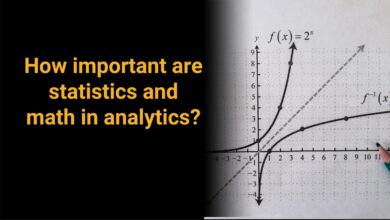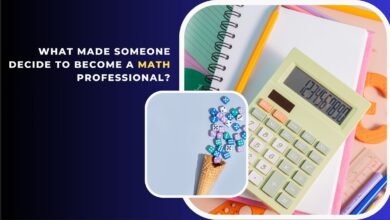Implementing Alternative Assessments: Best Practices

In today’s educational landscape, the conversation around assessments has shifted dramatically. As traditional testing methods face increasing scrutiny, educators and institutions are turning to alternative assessments to better evaluate student learning in ways that are more authentic, engaging, and aligned with real-world skills. This shift represents not just a change in evaluation methods, but a fundamental rethinking of how we measure educational success.
The Growing Case for Alternative Assessment
The limitations of traditional testing have become increasingly apparent in recent years. According to recent surveys, fewer than 30% of parents and teachers believe high-stakes testing is an important measurement of student learning. Additionally, 50% of administrators and 58% of teachers feel traditional testing is outdated and needs significant reform. This widespread dissatisfaction has accelerated the adoption of alternative assessments across educational settings.
Alternative assessment methods offer several advantages over traditional approaches. They tend to be more authentic, allowing students to demonstrate knowledge and skills in contexts that mirror real-world applications. They also typically provide more immediate and actionable feedback, supporting ongoing learning rather than simply measuring end results. Perhaps most importantly, they often engage students more deeply in the learning process, fostering intrinsic motivation and meaningful connections to the material.
Types of Alternative Assessments
Educators implementing assessments beyond traditional testing have a variety of options to choose from, each with unique strengths and applications:
Project-Based Assessments
Project-based assessments involve students creating complex, often multi-stage projects that demonstrate their knowledge and skills. These might include research projects, multimedia presentations, or community-based initiatives. The key characteristic is that students must apply their learning to create something original that showcases their understanding and abilities.
Effective project-based assessments:
- Have clear objectives and evaluation criteria
- Allow for student choice and creativity
- Include multiple checkpoints for feedback and revision
- Culminate in a final product or presentation that demonstrates learning
Portfolio Assessment
Portfolios provide a longitudinal view of student development, showcasing work samples, reflections, and evidence of growth over time. Digital portfolios have made this approach more manageable and versatile, allowing students to include multimedia elements and organize their work in innovative ways.
Components of strong portfolio systems:
- Clear guidelines for selection of work samples
- Opportunities for student reflection on their learning
- Evidence of revision and improvement
- Connections between portfolio contents and learning standards
Performance-Based Assessment
Performance assessments require students to demonstrate skills and knowledge through performances or the creation of products. These might include debates, scientific demonstrations, musical performances, or art exhibitions. The focus is on the process as well as the product, with emphasis on applying knowledge in authentic contexts.
Key elements of effective performance assessments:
- Authentic tasks that mirror real-world applications
- Clear performance criteria and rubrics
- Opportunities for practice and feedback
- Multiple ways to demonstrate proficiency
Self and Peer Assessment
Involving students in the assessment process develops metacognitive skills and deepens understanding of quality work. Self-assessment encourages students to reflect on their own learning, while peer assessment provides opportunities for collaborative evaluation and feedback.
Best practices for self and peer assessment:
- Provide clear criteria and models of quality work
- Teach specific feedback strategies
- Incorporate reflection questions that prompt deep thinking
- Balance self/peer assessment with teacher evaluation
Implementation Strategies for Success
Implementing alternative assessments effectively requires thoughtful planning and execution. The following strategies can help educators make the transition successfully:
Start with Clear Learning Objectives
Effective alternative assessments begin with clearly defined learning objectives. What should students know and be able to do as a result of their learning? These objectives should drive the design of the assessment, ensuring alignment between what is taught and what is assessed.
When developing objectives for alternative assessments:
- Focus on higher-order thinking skills
- Include both content knowledge and process skills
- Consider real-world applications
- Make objectives measurable and observable
Develop Robust Rubrics
Clear, detailed rubrics are essential for alternative assessments. They provide transparency about expectations, guide student work, and ensure consistency in evaluation. Effective rubrics describe multiple levels of performance across different dimensions of the task.
Characteristics of quality rubrics:
- Specific, descriptive language at each performance level
- Focus on important aspects of the task
- Balance between structure and flexibility
- Student-friendly language when appropriate
Provide Models and Examples
Students benefit from seeing models of successful work. Providing examples at different quality levels helps students understand expectations and visualize possibilities for their own work.
Effective use of models includes:
- Analyzing examples together as a class
- Highlighting specific strengths in exemplars
- Discussing how examples meet criteria
- Using anonymous student work from previous years
Build in Formative Checkpoints
Alternative assessments should include opportunities for feedback and revision throughout the process. This supports learning and helps students refine their work before final submission.
Strategies for formative assessment:
- Schedule regular check-ins during projects
- Use peer feedback sessions at key points
- Implement digital tools that facilitate ongoing feedback
- Create self-assessment opportunities tied to rubric criteria
Addressing Common Implementation Challenges
While alternative assessments offer numerous benefits, they also present challenges that educators must navigate:
Time and Resource Constraints
Alternative assessments typically require more time for implementation and evaluation than traditional tests. To address this challenge:
- Start small with one unit or course section
- Use technology to streamline feedback processes
- Incorporate peer feedback to distribute the evaluation load
- Design assessments that assess multiple standards simultaneously
Ensuring Validity and Reliability
Critics sometimes question whether alternative assessments provide valid and reliable measures of student learning. To strengthen these aspects:
- Align assessments clearly with standards and objectives
- Use consistent evaluation criteria across similar tasks
- Train multiple evaluators when possible
- Collect multiple data points rather than relying on single assessments
Stakeholder Buy-In
Parents, administrators, and even students accustomed to traditional grading may need support in understanding alternative approaches:
- Communicate the purpose and benefits clearly
- Share research supporting alternative methods
- Provide examples of how these assessments connect to real-world skills
- Involve stakeholders in developing or reviewing assessment plans
Scalability Concerns
Implementing alternative assessments across large programs or institutions presents logistical challenges:
- Develop common frameworks while allowing for customization
- Create shared resource banks of exemplars and rubrics
- Establish professional learning communities for support
- Use technology platforms designed for alternative assessment
Technology Tools Supporting Alternative Assessment
Digital tools have made alternative assessments more manageable and effective. Some valuable technologies include:
Digital Portfolio Platforms
Tools like Seesaw, Google Sites, and Portfolium allow students to collect, organize, and present their work digitally, making portfolio assessment more practical and powerful.
Project Management Tools
Platforms such as Trello, Asana, and project-specific learning management systems help teachers and students track progress on complex projects.
Multimedia Creation Tools
Applications for creating videos, podcasts, websites, and other digital products enable students to demonstrate learning in diverse formats.
Feedback and Assessment Platforms
Tools designed specifically for giving feedback on student work, such as Turnitin, Peergrade, and Formative, streamline the assessment process.
Case Studies in Successful Implementation
Schools and districts that have successfully implemented alternative assessments offer valuable lessons:
Elementary Education Example
A K-5 school replaced traditional spelling tests with vocabulary portfolios where students collect words, demonstrate understanding through usage, create visual representations, and reflect on their learning. Teachers report deeper word knowledge and greater student engagement compared to weekly tests.
Secondary Education Application
A high school science department implemented a year-long research project where students identify real-world problems, design investigations, collect and analyze data, and present findings to community experts. The program has increased student interest in STEM careers and improved college readiness indicators.
Higher Education Innovation
A university education program replaced traditional exams with teaching demonstrations where students plan and deliver lessons, reflect on their practice, and receive feedback from peers and instructors. Graduates report feeling better prepared for classroom teaching as a result.
Measuring Impact and Effectiveness
To ensure alternative assessments are working as intended, educators should collect data on multiple dimensions:
Student Learning Outcomes
- Content knowledge and skills mastery
- Higher-order thinking abilities
- Transfer of learning to new contexts
- Long-term retention of material
Student Engagement Metrics
- Time on task
- Depth of student reflections
- Level of student initiative
- Student self-reports on engagement
Stakeholder Feedback
- Student perceptions of assessment value
- Parent understanding and support
- Teacher observations of effectiveness
- Administrator and community feedback
The movement toward alternative assessment represents a significant shift in educational thinking, moving beyond narrow measures of content recall toward evaluations that capture the complex, multifaceted nature of meaningful learning. By implementing thoughtful alternative assessments, educators can create evaluation systems that not only measure learning more authentically but actually enhance the learning process itself.





